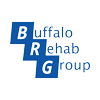Understanding Low Tone & Spasticity in Children
Imagine watching your little one struggle with movements that should come naturally, like holding their head up, sitting, or even reaching for a toy.
For many parents, this can be a daily reality due to conditions like low tone and spasticity.
At Buffalo Rehab Group, we understand the concerns that come with these challenges and are here to offer support and solutions through Physical Therapy.
What is Low Tone?
Low tone, also known as hypotonia, refers to decreased muscle tone.
Muscle tone is the amount of tension or resistance to movement in a muscle. Children with low tone may appear floppy and have difficulty with movement and stability. This condition can affect various parts of the body, including the arms, legs, neck, and trunk. Low tone is often seen in children with Down Syndrome.
Signs and Symptoms of Low Tone:
- Delayed motor skills development (e.g., sitting, crawling, walking)
- Poor posture and balance
- Difficulty feeding or swallowing
- Decreased strength and endurance
- Joint hypermobility (excessive flexibility)
What is Spasticity?
On the other end of the spectrum, spasticity is characterized by increased muscle tone, resulting in stiff and rigid muscles.
This condition can lead to muscle spasms, involuntary movements, and difficulty with coordination. Spasticity often occurs in conditions like cerebral palsy, traumatic brain injury, and other neurological disorders.
Signs and Symptoms of Spasticity:
- Muscle stiffness and tightness
- Limited range of motion
- Uncontrollable muscle contractions
- Difficulty with voluntary movements
- Pain or discomfort in the affected muscles
How Physical Therapy Can Help
Physical therapy is essential in managing both low tone and spasticity in children. Therapists assess each child’s unique needs and develop personalized treatment plans.
For low tone, therapy includes strengthening exercises to enhance muscle strength and stability, balance and coordination activities, postural training for proper alignment, and sensory integration therapy.
For spasticity, treatment involves stretching and range of motion exercises to reduce stiffness
How can you best support your child’s journey?
Navigating the challenges of low tone or spasticity can be daunting, but with the right support, your child can make meaningful progress. If you have concerns about your child’s muscle tone or movement, our experienced Pediatric Physical Therapists are here to guide you through every step of the journey, providing the expertise and care your child needs.
Treatment is covered by insurance, no referral is needed to start, and with flexible appointments available, you can find a time that’s best for you.
Click the button below to get started.
